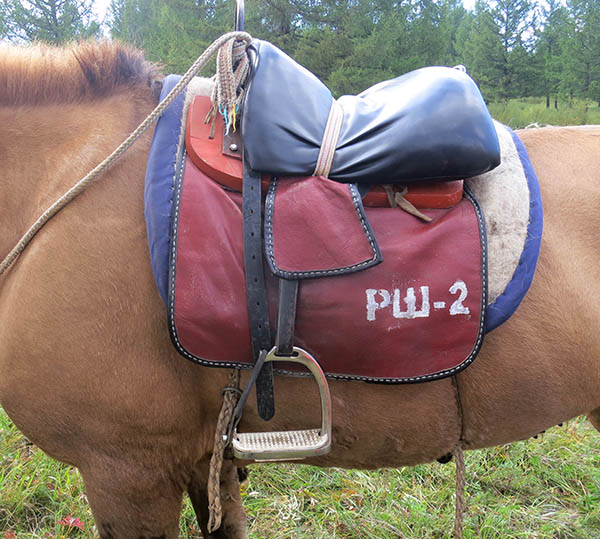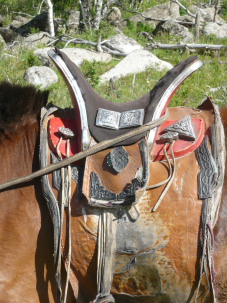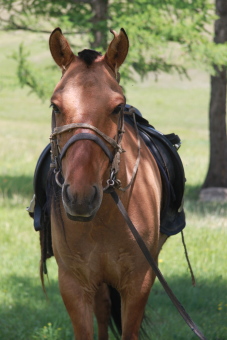

This is one of the most frequent questions we receive regarding our horse riding tours in Mongolia. And it is true that traditional Mongolian saddles - though beautiful - do not look very comfortable!
We have created our own saddles, adapted to both the foreign rider and the Mongolian horse. Indeed, English saddles can't be used with Mongolian horses as they are too long for the short back of this horse. We tried it but it hurted the horse on the loin.
Our saddles are derived from what Mongolian call a "russian saddle tree".
What makes our saddles specific:

You will have the opportunity to see it used by our nomadic breeders, who accompany you during the horse ride.
If you want, they will be happy to let you try it, but you will quickly check that ... let's say ... you have to be born on it to survive!
The traditional Mongolian saddle is characterized by wooden base rather short and high.
The pommel and cantle are raised high, stabilizing the rider and protecting him from forward and backward falls, considered the most dangerous.
The seat is often decorated with small pieces of metal richly carved, which do not injure the rider, who is protected by the multiple layers of his traditional del.
Stirrups are always kept very short, and they often have a low sole, which limits the risks for the foot to pass through the stirrup if you fall.
The small size of the seat is perfectly adapted to the short back of Mongolian horses. Western or English saddles, even small, are still too large and they wound their back.
Moreover, this very high seat is adapted to the traditional Mongolian way of riding horses, based largely on the sit to lead and stop the horse.
One can indeed easily understand that the rider, if he goes without a saddle, literally crushes with his weight the back of the small Mongolian horse, which then loses much of its motion.
Paintings dating from the eighth century, and others in the 13th century at the time of Genghis Khan, already show riders mounted very high above their horse, as opposed to European and Arab horsemen who had very long stirrups at that time.
This saddle allows a light way of riding, which releases the horse's back and restores its natural balance and vivacity, that brought him to Europe during the great Mongol conquests!

The traditional nomadic bridle in Mongolia is no less original!
Indeed, the bit (amgai) has 2 very long and thin bars, much wider than the horse's mouth.
With European bits, we are used to see the rings against the corner of the mouth of the horse. But in Mongolia, they are in the middle of the cheeks.
It is thus common for foreign riders, seeing this ring on the cheek, to believe that the bit has "turned"!
The Mongol rider uses mainly neck reins, whose effect is accentuated by the action of the rings on the cheeks.
He rides holding his two reins in his right hand, and his lunge in the left hand, so that he can hold his horse in case of a fall.
The concern for security is permanent in the development of Mongolian tack, which is explained by the large number of hours spent in the saddle, and especially the vital importance of the horse to his rider, in an environment where a man on foot, especially in winter temperatures of -30 °, is particularly vulnerable.
